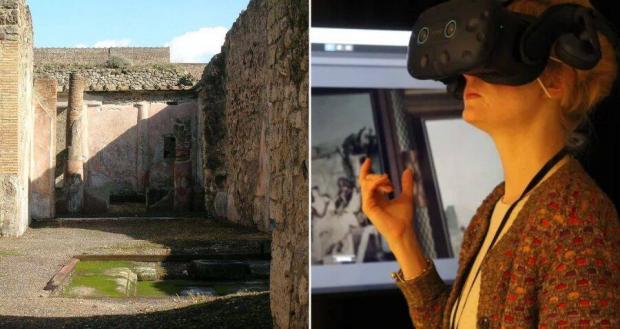
Breaking News
 Argentina Moves to Let Banks Offer Bitcoin and Crypto Services
Argentina Moves to Let Banks Offer Bitcoin and Crypto Services
 We're One Storm Away From Disaster
We're One Storm Away From Disaster
 Think a Dairy Cow Will Tie You Down? Here's the Truth.
Think a Dairy Cow Will Tie You Down? Here's the Truth.
 Students challenge auto industry with modular EV you can fix yourself
Students challenge auto industry with modular EV you can fix yourself
Top Tech News
 This tiny dev board is packed with features for ambitious makers
This tiny dev board is packed with features for ambitious makers
 Scientists Discover Gel to Regrow Tooth Enamel
Scientists Discover Gel to Regrow Tooth Enamel
 Vitamin C and Dandelion Root Killing Cancer Cells -- as Former CDC Director Calls for COVID-19...
Vitamin C and Dandelion Root Killing Cancer Cells -- as Former CDC Director Calls for COVID-19...
 Galactic Brain: US firm plans space-based data centers, power grid to challenge China
Galactic Brain: US firm plans space-based data centers, power grid to challenge China
 A microbial cleanup for glyphosate just earned a patent. Here's why that matters
A microbial cleanup for glyphosate just earned a patent. Here's why that matters
 Japan Breaks Internet Speed Record with 5 Million Times Faster Data Transfer
Japan Breaks Internet Speed Record with 5 Million Times Faster Data Transfer
 Advanced Propulsion Resources Part 1 of 2
Advanced Propulsion Resources Part 1 of 2
 PulsarFusion a forward-thinking UK aerospace company, is pushing the boundaries of space travel...
PulsarFusion a forward-thinking UK aerospace company, is pushing the boundaries of space travel...
 Dinky little laser box throws big-screen entertainment from inches away
Dinky little laser box throws big-screen entertainment from inches away
 'World's first' sodium-ion flashlight shines bright even at -40 ºF
'World's first' sodium-ion flashlight shines bright even at -40 ºF
Step inside an ancient Pompeian home! Scientists use virtual reality to reconstruct...

Before the devastating eruption of Mount Vesuvius in 79 AD, Pompeii was a thriving city with a population of up to 20,000 people.
Now, scientists have delved deeper into one of Pompeii's most beautiful homes, the House of Greek Epigrams.
While the house has been damaged through centuries of neglect, weathering and volcanic eruptions, researchers from Lund University have been able to rebuild it, using virtual reality and eye-tracking technology.
'Eye-tracking technology and virtual reality do now provide unprecedented opportunities to assess the visual qualities of ancient spaces,' said Dr Giacomo Landeschi, co-author of the study.
The House of Greek Epigrams is an impressive home in northeast Pompeii that was once decorated with intricate frescoes.
'Work and daily activities were intermingled during the day,' said Danilo Marco Campanaro, co-author of the study.
'The house communicated to people about the personal power and status of the owner and his family.'
Using the videogame engine Unity, the researchers reconstructed a 3D model of the house, complete with restored paintings.
The team then used spatial analysis and eye-tracking technology to monitor volunteers as they explored the House of Greek Epigrams in virtual reality.
This allowed them to measure the visual attention of volunteers as they toured the house, tracking what caught their eyes.



